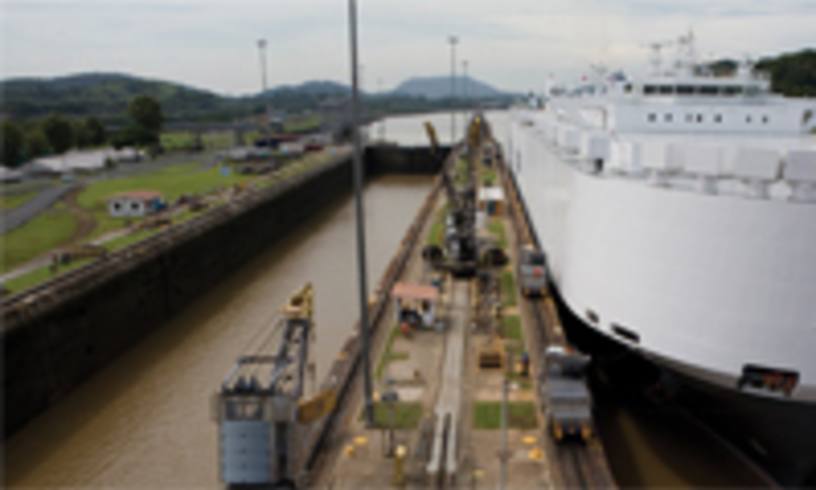The frenzy of activity in the central American banking sector between 2005 and 2007 - when the area's main economies of El Salvador, Guatemala, Honduras, Nicaragua and Panama experienced high economic growth - seems like a distant memory. Banks' attitudes towards the region are now much more subdued.
An example of this pared down thinking is Scotiabank, which owns the largest private bank in Costa Rica, formerly Banco Interfin, and now rebranded. The acquisition in 2006 established Scotiabank as the fourth biggest banking group in central America by assets, but the bank's Canadian owners have already faced two hurdles in the central American country, says Luis Liberman, CEO of Scotiabank Costa Rica.
The first was the merger, which not only involved integrating a small, middle-market, retail operation that Scotiabank already had in Costa Rica with Interfin's more commercial banking-focused unit, but also seizing the opportunity for the introduction of a new technology platform, "which proved particularly difficult", says Mr Liberman.
The second hurdle was that "just when we were out of the woods with that and ready to grow, we were in the midst of the crisis where we had to watch the quality of the portfolio and growth declined," he adds.
Scotiabank also has a presence in El Salvador and was the first international bank to buy a local bank - the country's third biggest bank, which now has a retail and commercial banking business mix of 70% and 30%, respectively. Problems caused by the US recession and by the openness and close connections of the region's economies to the US, including a drop in trade, tourist receipts and foreign investment, have been compounded by a 10% decline in remittances, which many of the region's banks service in the US and locally.
The repercussions of the crisis are being felt particularly hard in El Salvador and Guatemala. The latter is the biggest economy in the region and boasts the largest population, but it is also one of the area's poorest countries. In El Salvador, remittances - which normally amount to $10bn a year for central America as a whole - account for 30% of gross domestic product (GDP).
Expansion challenges
Raul Anaya, Citigroup's regional managing director for central America, says that Citi's decision to extend its large Mexican banking presence down into all six of the main central American countries by buying Grupo Financiero Uno and Grupo Cuscatlán in 2006 has brought challenges as well as benefits.
On the plus side, says Mr Anaya, are "the Cuscatlán and Financiero Uno acquisitions, these are highly complementary positions. [Citigroup] already had a corporate and investment banking business in central America [in Panama]. But Cuscatlán brought us an important retail and commercial banking operation and Grupo Financiero Uno brought us a very important [credit] card operation - and in both cases as regional players."
But establishing the new regional banking group has not been without its headaches. "In 2007 and 2008 we worked extensively on risk management enhancements, making changes everywhere in terms of our underwriting, in terms of our collections, in terms of risk mitigation rules. Then came our integration and the economic deterioration," says Mr Anaya, who previously worked as Latin America CEO for Citi's global consumer group.
Growth prospects
Economists forecast negative GDP growth for central America as a whole this year, with Panama a notable exception. The country, whose $5.3bn canal expansion plan has recently been fully financed, and which also boasts a strong macroeconomy, is expected to enjoy continued economic growth, though at a slower 3% GDP rate compared with last year's dynamic 9.2%.
Panama's banking system is the biggest in central America, as well as one of the largest in Latin America, with 72 licenced banks - 30 offshore and 42 with a license to take Panamanian deposits - out of central America's total of 143. Total Panamanian banking sector assets amounted to $48bn as of December 31, 2008, equivalent to about 300% of the nation's GDP, according to the country's bank superintendent.
In recent years, Panama has become a central American banking centre, on top of being an international banking centre. Several central American banks with regional franchises have reorganised and established their holding companies in the country. This has been the case with Banco Agricola, which boasted a 30% share of the loan market and was the biggest bank in El Salvador until it was acquired by Colombia's largest bank, Bancolombia, in 2006. Citi's Cuscatlán also has a presence in the country, as does BAC Credomatic, central America's second biggest regional banking group, which includes the region's largest and oldest credit card-focused business.

Raul Anaya, Citigroup's regional managing director for Central America
Global fallout
Many regional bankers agree that the impact of the crisis on the industry is not nearly as bad as expected, even though a slowdown in credit expansion due to declining demand is more pronounced this year.
"Yes, past due loans and provisions [for bad and doubtful loans] have been increasing, but not dramatically. It is not anything that you could categorise as catastrophic," says Jorge Londoño, CEO of Bancolombia.
And while banks that focused aggressively on consumer lending, especially credit card lending, before the crisis have tended to be hit the worst in terms of non-performing loan rates, this is "always a challenge at a time of rising unemployment because of the lack of collateral for credit cards, unlike for mortgages and for types of consumer credits. But it is still a small problem and much less than I anticipated," says Scotiabank's Mr Liberman.
Many financial institutions in central America are also being more cautious about issuing loans in the light of the international crisis, according to the Fitch Ratings report 'Central American Banks: Review and Outlook', published in April. For example, in El Salvador, according to the country's financial sector regulator, Superintendencia del Sistema Financiero (SSF), loans held by banks declined 4.8% in nominal terms in the year to the end of June 2009, compared with a 3.5% increase in lending for the full year in 2008. However, Fitch says that this credit contraction also reflected more conservative loan origination standards compared with previous years as a result of the internal reorganisation of local banks purchased before the crisis by international players. Foreign banks also clearly dominate the market. At the end of June, according to the SSF, the local units of Bancolombia, Citigroup, the UK's HSBC and Scotiabank accounted for 81% of the country's total banking system loans.

Jorge Londoño, CEO of Bancolombia
Holding up
Reflecting improvements in bank management and supervision, banks in central America have been found not to have exposure to complex or lethal structured assets. There has not been a bailout of any banking system and so far governments have not had to rescue a single bank.
Although the international credit crunch has made it harder for local banks to secure international financing, remedies have been forthcoming. For instance, in El Salvador such difficulties appear to have spurred an increase in bond issues, perceived as an alternative source of funding for banks.
Multilateral institutions have also been ready with assistance. So far this year, the International Monetary Fund has made precautionary standby arrangements with Costa Rica, El Salvador and Guatemala, lasting from 15 months to three years and equivalent to $1bn, $735m and $800m, respectively, to help maintain investor confidence and the countries' macroeconomic and financial sector stability in the crisis.
Separately and in what appears to be another precautionary move, GE Capital, a US bank, recently exercised an option to increase its ownership in BAC Credomatic from a 49.99% stake, which it took when the original acquisition agreement was reached in 2005, to 75% in June, boosting the financial position of central America's second biggest regional banking group by assets.
The regional strategy of central America's biggest banks has also fortified the banking industry. "Given the small size of the economies, it makes sense [for banks] to grow beyond frontiers so that risks are not concentrated in a single economy, but diversified to neighbouring countries," says Bancolombia's Mr Londoño.
Having regional franchises is also a way to cut expenses and to increase efficiency, through economies of scale. Mr Anaya says that as part of its regional strategy, Citigroup has established a system of "checks and balances", with a centralised risk management system, "highly empowered" CEOs in charge of individual banks in each country and product managers who make decisions across countries "to see if one product works in a country and try it out in another".
Mr Londoño says that Bancolombia has "its own set of advantages" in central America. For instance, in terms of the size of the population and economic GDP, Colombia and central America as a whole are very similar; and the universal banking model that Bancolombia has in Colombia, servicing every level of society and all economic sectors, can "with care and attention be translated to the region", he says.
Although Bancolombia was the most recent foreign bank to make an acquisition in El Salvador (after Citigroup, HSBC and Scotiabank), since owning Banco Agricola, El Salvador's largest bank, the bank has increased its share of the market and financial sector profits. "Our profitability has been better than our competitors," says Mr Londoño.
Overall, though, the profits of the big regional banks are either stabilising or declining. Mr Liberman expects "at least a 25% decline" in bank profits in Costa Rica this year, in sharp contrast, he says, with a return on capital for most banks of 15% to 25% in the years preceding the crisis.
However, with all the countries in central America (except for Panama) underbanked, at levels of about 50%, "similar to what we see in other emerging economies, the opportunities are there", says Mr Anaya.
Consolidation prospects
Against this background, there is disagreement among bankers over how much more consolidation there may be in the region. Bancolombia, much like Banco Industrial, Guatemala's biggest privately owned bank, which recently moved into southern Mexico and negotiated licences in El Salvador, has not hidden its interest in expanding more in the region.
However, Mr Liberman is circumspect. "Scotiabank's vision was always to have a regional bank with a presence in each country. This whole crisis has derailed this aim somewhat. When the recovery comes, we will re-evaluate it."
Finally, Mr Anaya says: "I don't expect another round of consolidations. I really don't believe we will see the intensity we saw in the past years. There could be one or two mergers, but I believe that largely everyone who wants to be in central America, already is."












